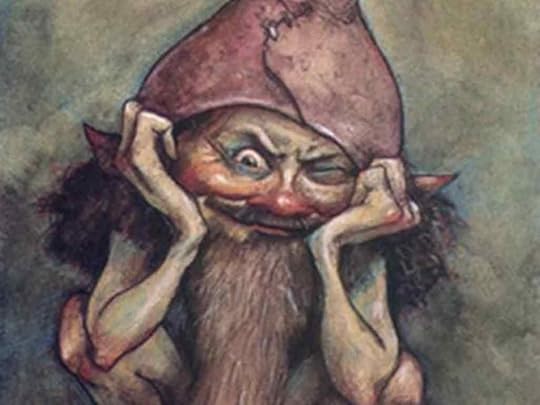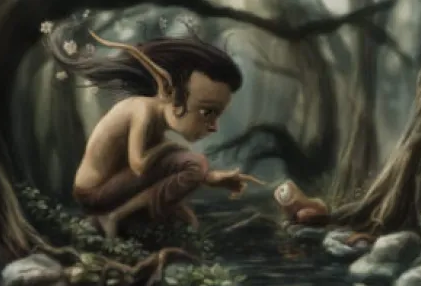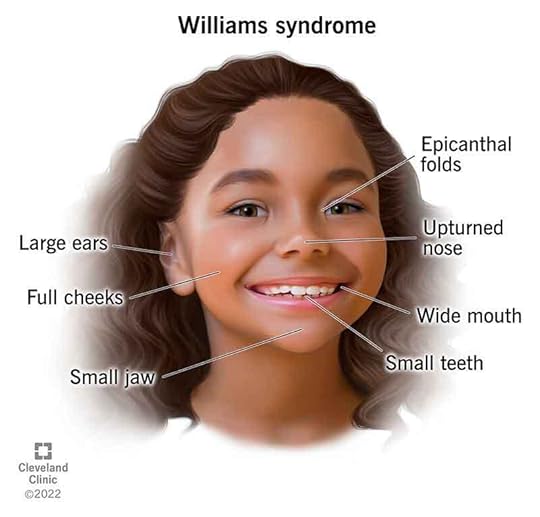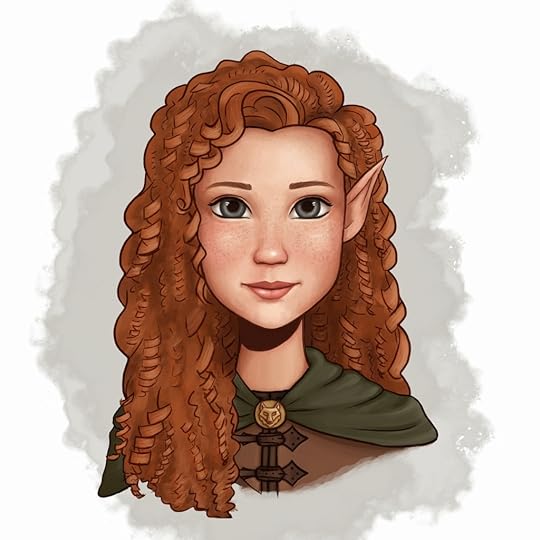Elves

An elf is a being originating in Germanic mythology. The elves were originally thought of as a race of divine beings endowed with magical powers for both the benefit and injury of mankind. Their appearance and characteristics have changed greatly over their telling. So what inspired these myths?

The word elf is found throughout the Germanic languages and seems to have originally meant “white being.” This origin can be traced back mainly through text of Christians written in Old and Middle English, midieval German, and Old Norse. The texts associate elves with gods of nose mythology. It is unclear if the “white being” means the coloration of skin or an auroa of light surrounding their divinity. Either way, it has long kept Elven mythology from having any diversity. Especially in modern times.

In early and modern folklore, they became associated with fairies of Romance folklore and assumed a diminutive size, often living in forests, underground, or in springs. They were often depicted as very young.
In the 19th-century, Romanticism attempted to restore them to full stature making them men and women of great beauty. It was this movement that prompted J.R.R. Tolkien to include this version of elves in his Lord of the Rings, cementing the image.

Pre-Tolkien Elves were thought to be friendly. They were highly musical and had distinct facial features with high cheekbones and upturned noses. Elves were also known for their keen wit and charm.
Post-Tolkien Elves were thought to be highborn and aloof. They still held onto their musical talent and showed more classical beauty characteristics. They also took on unsurpassed fighting abilities and long lives.
So inspired this enduring myth?

Many folklorists believe that people affected by Williams Syndrome were the inspiration for the stories of Elves.
Williams Syndrome is a rare genetic disorder characterized by mild to moderate delays in cognitive development, a distinctive facial appearence, and a unique personality that combines over-friendliness with high levels of empathy and anxiety. This disorder is caused by a partial deletion of up to 28 genes of chromosome 7. These genes are involved in the production of elastin.
Elastin is a protein that provides elasticity and suppleness to structures such as the skin and blood vessel walls. The lack of elastin provides the distinct features. This condition is not an inherited trait and is not associted with lack of prenatal care.
The disorder affects one in every 10,000 people, producing unique symptoms. Most affected by Williams Syndrome are extremely outgoing and friendly. Despite the learning disabilities, they are talkative, witty, and charming. Many are considered musical savants. The disorder can more commonly be identified by the upturned noses, high cheekbones, wide smiles, and pointed chins.

Folklorists also believe that people with Williams may have bee in demand as court jesters during the European Renaissance. Their musicality, good humor, and eagerness to please would have made them popular entertainers.
Historian Suzannah Lipscomb states that many – if not all – jesters of England’s Tudor period were people with learning disabilities. These roles were exploitative, but also a place of privilege. For example, Henry VIII’s jester Will Somers was intellectually disabled, but Henry paid a caretaker to look after him and provide him with fine clothing and food.

It is very likely that Williams Syndrome – which was not identified until the 1960’s – was the origin for the myths of Elves in its earliest form. Over time, as we have passed the stories down, the myth has changed and grown. We can see how this one has evolved especially through the Romantic period and past the publication of Lord of the Rings.
We still see it growing and evolving today with the latest installment of LOTR’s Rings of Power. The creators of the show opted for colorblind casting. This has led to people of color playing Elves in the show, creating much controversy.
People across the internet have decried the casting of Arondir because it wasn’t true to Tolkien’s vision. Tolkien has been unable to comment – since he died in 1973. This harkens back to the origin of the word meaning “white being.” It is true that Elves were originally depicted as white. The myth originated in predominately white cultures (Germanic and Nordic).
However, stories are meant to change. Tolkien changed many things about the Elven mythology – including the spelling of the word (Elfin to Elven). The stories of Elves will continue to grow and change. I’m excited to see where we land in the future.
Sources:
Albizu73. (2021, October 17). Elves, the not so hidden people of Fantasy. Speculative Tertulia. Retrieved September 10, 2022, from https://ingmaralbizu.com/elves-the-not-so-hidden-people-of-fantasy/
Hall, Alaric (2007). Elves in Anglo-Saxon England: Matters of Belief, Health, Gender and Identity. Boydell Press.
Jakobsson, Ármann (2015). “Beware of the Elf! A Note on the Evolving Meaning of Álfar“. Folklore. 126 (2): 215–223.
Latson, J. (2017, June 20). Williams syndrome and possible origins of Centures-old myths. Time. Retrieved September 10, 2022, from https://time.com/4823574/mythology-williams-syndrome/?fbclid=IwAR24EITWtl32fJJSItXaae2lpJWzo2otBCsfkB5Notn0Iw_Sp28W9Q9TTrk
Stinson, K. (2022, September 9). Why is the casting for ‘the rings of power’ causing controversy? Distractify. Retrieved September 10, 2022, from https://www.distractify.com/p/rings-of-power-controversy
U.S. Department of Health and Human Services. (n.d.). Williams syndrome. National Institute of Neurological Disorders and Stroke. Retrieved September 10, 2022, from https://www.ninds.nih.gov/health-information/disorders/williams-syndrome#:~:text=Publications-,Definition,levels%20of%20empathy%20with%20anxiety.
Williams syndrome. Williams syndrome – Better Health Channel. (n.d.). Retrieved September 10, 2022, from https://www.betterhealth.vic.gov.au/health/conditionsandtreatments/williams-syndrome



